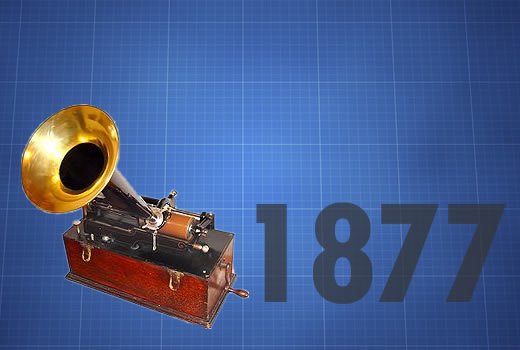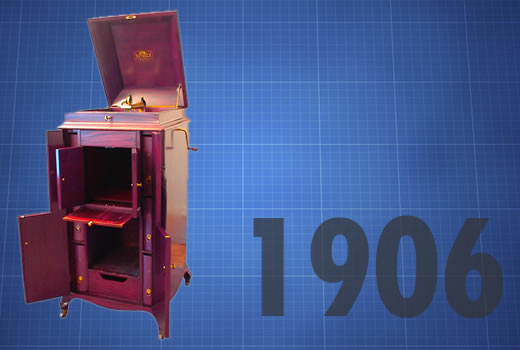From Edison’s Phonograph to Jobs’ iPod: How Design Brought Music to the Masses
This post is also available as part of Effen Vodka’s Defining Style series
The iMac may have signaled a new, design driven direction for Apple on Steve Jobs’ return to the company, but it’s the iPod that set the company on a path to market dominance. It led to the iPhone (arguably, the device that made smartphones cool for the masses) which led to the iPad, which is (at least for the moment) the only tablet device that’s managed to gain significant traction with consumers.
Innovation is often credited to the first version of something new, but design is the unspoken element that makes the difference between the product that’s first and the product people care about. For more than a century, there hasn’t been a better example of design driving innovation than the devices that brought music to the masses.
From Edison’s phonograph to Jobs’ iPod, here’s a look at the devices that have driven innovation through the art of design.
Thomas Edison’s Phonograph
Thomas Edison’s phonograph wasn’t the first device to record sound , but it was the first that could play them back. The one working invention prior to the phonograph – the phonautograph, only created visual representations of sound. You can thank Edison for the fact that you’re able to listen to music, rather than watch it on a fancy transcription machine.
Alexander Graham Bell and Emile Berliner’s Wax
Originally recorded on tin-foil horizontal cylinders (imagine an imprinted Coke can), engineers at Alexander Graham Bell’s Volta Laboratory improved upon the sound quality of Edison’s phonograph by replacing the tin cylinders with ones coated in wax. A year after Bell was granted the patent for recording in wax, and named the invention the graphophone. It was a German inventor named Emile Berliner, however, who created the modern record disc as part of his gramophone system, seen as a key development in the modern music industry. Bell’s design improvement made recordings better to listen to, Berliner’s made them accessible.
The Victrola
The design of the records themselves were an improvement, but the phonographs used to play them largely stayed the same until the Victrola. For purely aesthetic reasons, the Victrola was the first record player to conceal the horn in an effort to make the players blend in, as opposed to standing out. Cabinets with gold trim and expensive wood made them best selling luxury items of the early 1900s.




